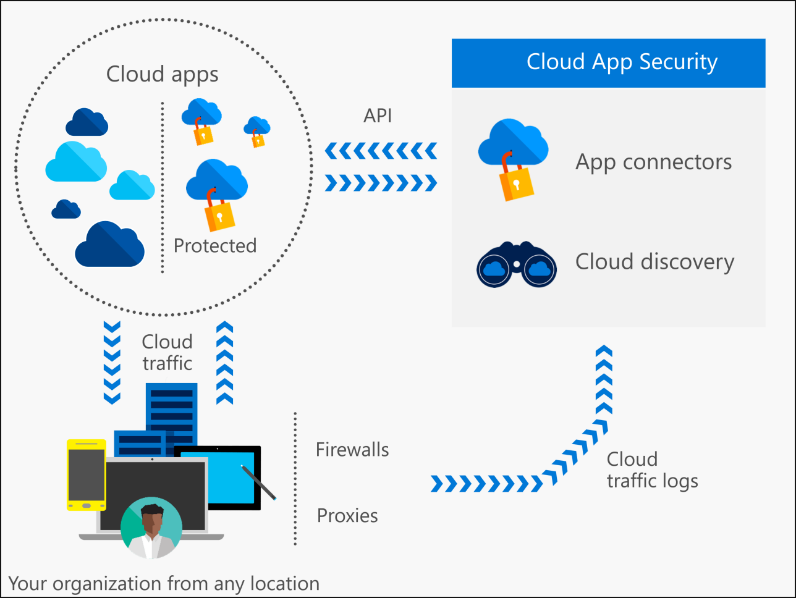Cloud monitoring helps you manage your cloud-based applications and services. Learn more about it and three Microsoft tools that can help.
With the cloud firmly enmeshed in all our lives, it’s important to understand how to keep your cloud-based applications and services safe and secure for your customers, team members, and organization as a whole. To do that, you need to implement cloud monitoring, a critical practice for maintaining the health, performance and security of your cloud-based IT infrastructure.
This practice will help your organization maintain smooth operations, detect issues early on, and efficiently allocate resources.
In this article, we’ll provide more information about what cloud monitoring is, who needs to implement it, and what types of Microsoft 365 tools can help you keep up with the practice.
What Is Cloud Monitoring?
As mentioned above, cloud monitoring is the practice of maintaining your cloud-based IT infrastructure. The practice is a method of reviewing, observing and managing the overall operational workflow in a cloud-based environment.
Cloud monitoring techniques help your organization keep track of the performance of websites, servers, applications, and other cloud infrastructure. This way, you know when an application or service is up and running and can respond in real-time the moment a site runs into difficulties to reduce or even prevent downtime as needed. It also helps you track usage so you know both when you need more IT professionals to help with a particular tool and when another tool might need fewer resources.
Today, every organization needs cloud monitoring, especially as teams become increasingly distributed. IT administrators must have constant visibility into how their digital assets perform. Luckily, cloud monitoring can be done manually, with automated tools, or using a combination of the two methods to maintain a reliable and efficient cloud environment.
Microsoft Tools for Cloud Monitoring
Microsoft 365 provides a few tools that can help you with your cloud monitoring practice. There are several routes you can take, from taking over the entire task to supplementing the work you’re already doing. We’ll review three types.
The Comprehensive Tool: Azure Monitor
Azure Monitor is a comprehensive cloud monitoring solution from Microsoft, meant to take most of the monitoring tasks off your plate. The tool provides you with the ability to collect, analyze and respond to monitoring data from both your cloud and on-premises environments.
The tool also provides reporting and analytics to help you learn more about how your applications and services perform. It can also identify the issues that affect your cloud environment and the resources they rely on.
Azure Monitor does all of this by collecting and aggregating data from your entire cloud system, including:
- Azure resources.
- Azure subscription.
- Azure tenant.
- Application.
- Operating systems.
It doesn’t only monitor Microsoft tools, either – it can also integrate with non-Microsoft tools so you’re getting a holistic view of your platform.
Using this data, Azure Monitor can then house the data in a data store based on its three pillars of observability (plus an additional one):
- Logs: Logs are system events that are recorded. They are timestamped, can be structured or free-form text, and contain several types of data.
- Metrics: These are numerical values that are attributed to describe an aspect of the system at a specific moment in time. These metrics are collected regularly and are identified with a name, a value, and a timestamp (and any additional defining labels).
- Changes: Changes are a series of events that are tracked and stored when you use Microsoft’s Change Analysis service.
- Distributed Traces: Distributed tracing provides you with a request’s path as it travels through your instrumented applications.
With this data, you can then use the tool and its integrations with other Azure and Microsoft products (such as Power BI or Azure Monitor Alerts) to gain insights, visualize the data, analyze it, and even respond.
The Singularly Focused Tool: Microsoft Defender for Cloud Apps
Microsoft Defender for Cloud Apps manages and reports on everything coming and going from Microsoft 365 via your corporate network logs, azure logs, endpoints, connectors for third-party shadow IT monitoring, as well as SharePoint, OneDrive and Exchange. Unlike Azure Monitor, Microsoft Defender for Cloud Apps is singularly focused on cybersecurity for software-as-a-service (SaaS) products while Azure Monitor also provides insights into overall cloud application and services performance and resource availability.
With Microsoft Defender for Cloud Apps, you can import router logs from some of the most popular applications: Barracuda, Check Point, Cisco, and more. You can also import custom logs and logs in unknown formats. This will give you greater insight into bottlenecks and slow connections from your network globally.
If you don’t have applications outside of Microsoft 365 or are monitoring those with another tool, you can also use a subset of Microsoft Defender for Cloud Apps, to focus only on your Microsoft products. You can view live activity from your Microsoft 365 tenant as it happens and verify which accounts and other apps have access to which resources.
Learn more about Microsoft Defender for Cloud Apps features below:
Discover
- Upload logs.
- Anonymize Private information.
Investigate
- Add apps, including Microsoft 365, SharePoint Online, and OneDrive for Business.
- Add Shadow IT apps like Amazon Web Services, Dropbox, G Suite, Okta, Salesforce, and ServiceNow.
- Explore the Azure logs, files, and accounts.
- Report on shared files and privileged users.
- Create customized reports.
- Manage permissions that apps have to Office 365 products.
Control
- Create policies by type: activity policy, anomaly detection policy, app discovery policy, Cloud Discover anomaly detection policy, and File policy.
- Create policies for risk categories: access control, cloud discovery, compliance, configuration control, DLP, privileged accounts, sharing control, and threat detection.
- Use pre-built templates.
Alerts
- Set alerts by resolution status, risk category, severity, app and user.
Both Microsoft Defender for Cloud Apps and Azure Monitor automate much of the work you’ll need to do in your cloud monitoring processes. There’s one more type of tool, however, that takes on the monitoring role while leaving many of the processes up to you.
The First Step Tool: Microsoft Secure Score
Microsoft Secure Score is a tool that aggregates an organization’s user behavior, system settings, and other security configurations into a single numerical score indicating its overall security posture. The score is calculated based on how an organization has implemented various security recommendations across different categories, such as identity, data, devices, apps, and infrastructure. It breaks down scores by area so you can see where you need to improve maturity.
The Secure Score dashboard shows your current score, score history over time, top recommendations to improve it, and benchmarks comparing your score to industry averages. Administrators can use the tool to track completed security actions, set performance goals based on the recommendations, and develop strategies to mitigate risks identified.
However, you shouldn’t use the score as the sole measure of your security effectiveness. You’ll want to also consider any unique security needs based on factors like industry and collaboration requirements.
Continue Cloud Monitoring With the Right Tools
Safeguarding cloud-based applications and services with cloud monitoring is a critical, ongoing process for understanding how your infrastructure is working and for keeping your organization running smoothly. By using the right tool for your organization, whether it’s as robust as Azure Monitor or simply a helpful tool like Microsoft Secure Score, you can protect your digital assets, optimize performance, and confidently manage your organization’s cloud environment.
We invite you to explore our unique approach, people and mindset, as well as our Microsoft Consulting Services as you evaluate the best Microsoft Cloud Partner options for your business. Contact us



